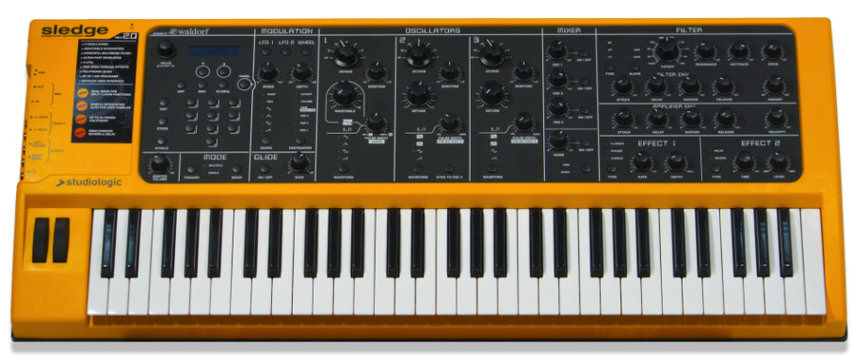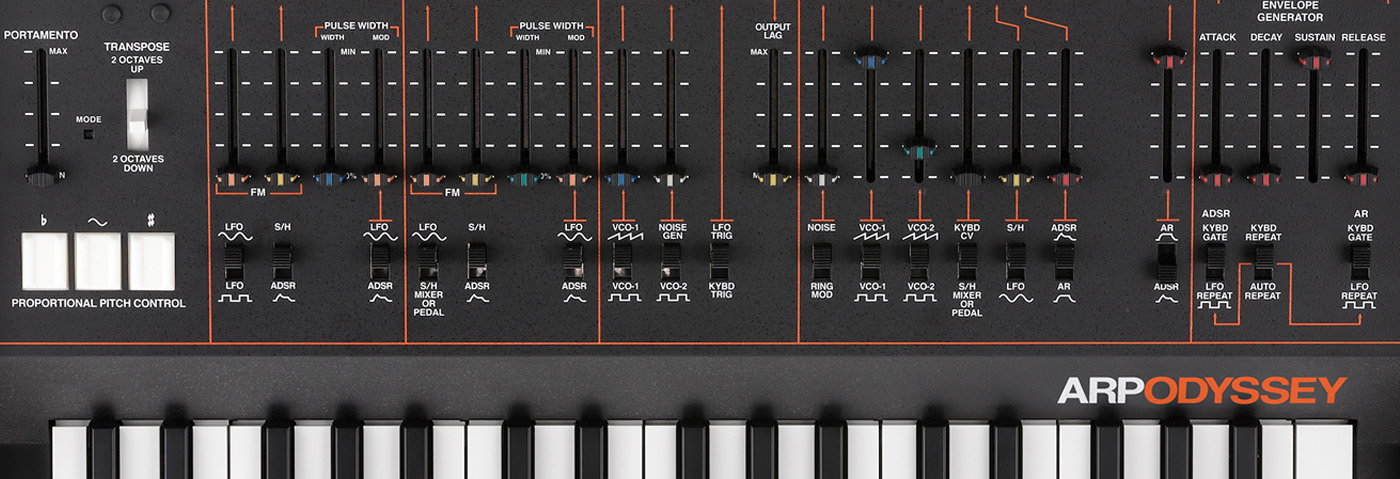
£799
The styling divides opinion – that bright, custard yellow finish isn’t for everyone – but beauty is only skin deep and the updated Studiologic Sledge’s strengths are hidden where they count: inside the unit, in the form of the synth engine, co-developed with German digital masters Waldorf.
All the hype about analogue synths over recent years has made some of us forget just how good a digital synth can be. You’d be foolish to overlook the Sledge just because it doesn’t fit in with the latest trends. For your money, you get a supremely versatile synth, combining virtual analogue synthesis with wavetables and sample-based sounds. There are sweet multi-mode filters, hugely flexible modulation options, a great arpeggiator and some useful built-in effects. The clear, intuitive front panel controls provide easy access to all the sound shaping options.
Listed at £799 but available for a little over £650 if you shop around, the second-generation Sledge is an excellent all-rounder with warm, powerful sound and a user-friendly approach to synthesis.

04.01 PM
Wow, 2 oscillators, 4 waveforms, filter, lfo to modulate it. It’s no wonder electronic music hasn’t really advanced in the last decade as people are still getting boners for things we’ve all seen/heard before. New synths are just tools for muso-posers to show off with, posh handbags for guys/gals who don’t leave their bedrooms. All you really need if you want hardware to make music is a £100, 20 year old Roland W-30 and a good idea.
This ain’t a dig at Attack.
09.29 AM
wow, the original really is a lot better sounding. Much richer and thicker sounding. The update is somehow ‘skimmed’.
08.43 PM
@Duncan
Ridiculous isn’t it. I went into a music shop the other day and all the guitars still only had six strings! Retrograde madness
07.22 PM
@Nathan
Not a fair comparison at all. Synths are based on technology that is constantly changing. And due to Moore’s Law, the technology is constantly getting cheaper. These two things dictate that synths should be evolving a lot more than they seem to be. What is new and unique here?
05.16 PM
@ Duncan
Plenty of unique synth design out there. That’s mostly what the eurorack format is about. Also, what would you consider “unique”? 99.999999% of soft synths are based on hardware. The only truly novel synthesis in software comes from stuff like MAX/MSP, PD, Kyma, etc.. Do you think the Roland W-30 was some sort of revolutionary design at the time? I’m old enough to remember and it wasn’t. I say the more synths the merrier.